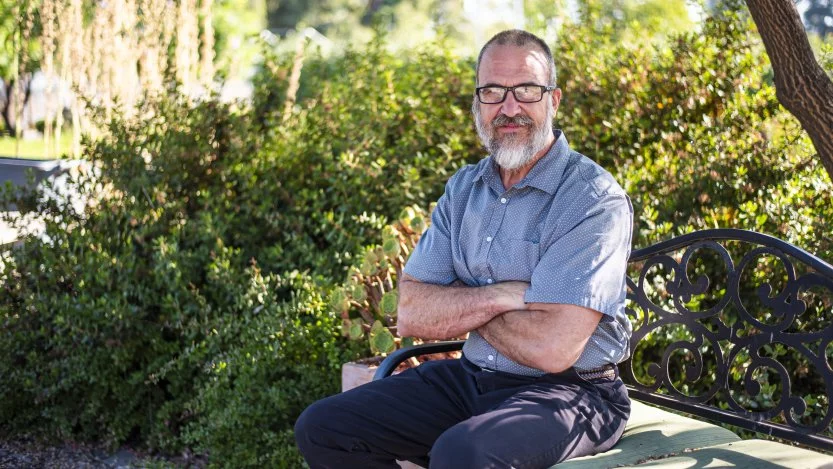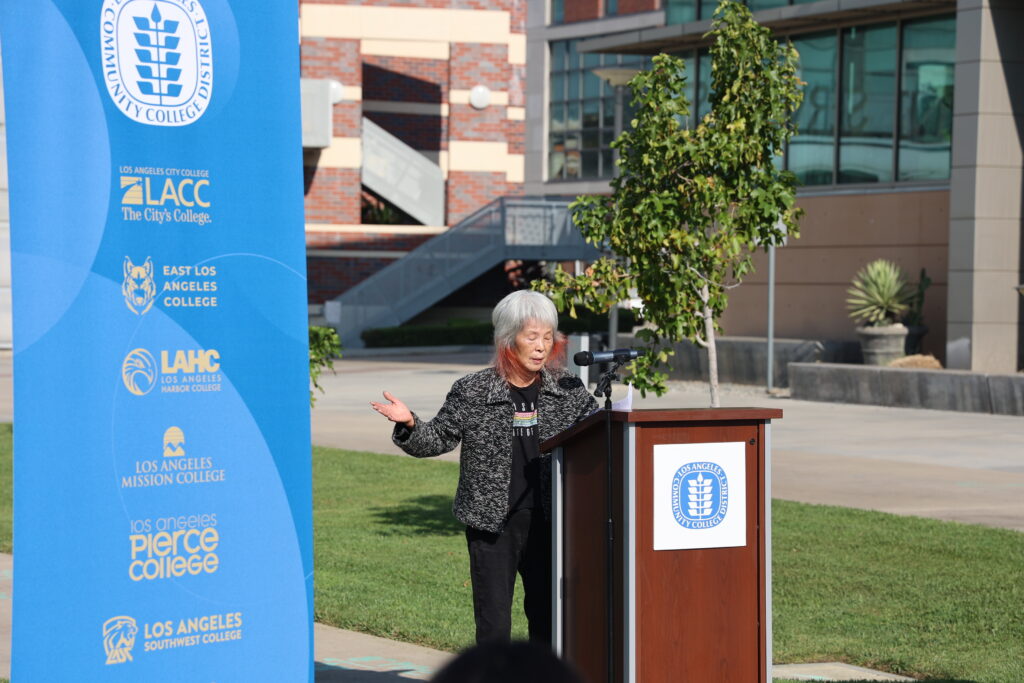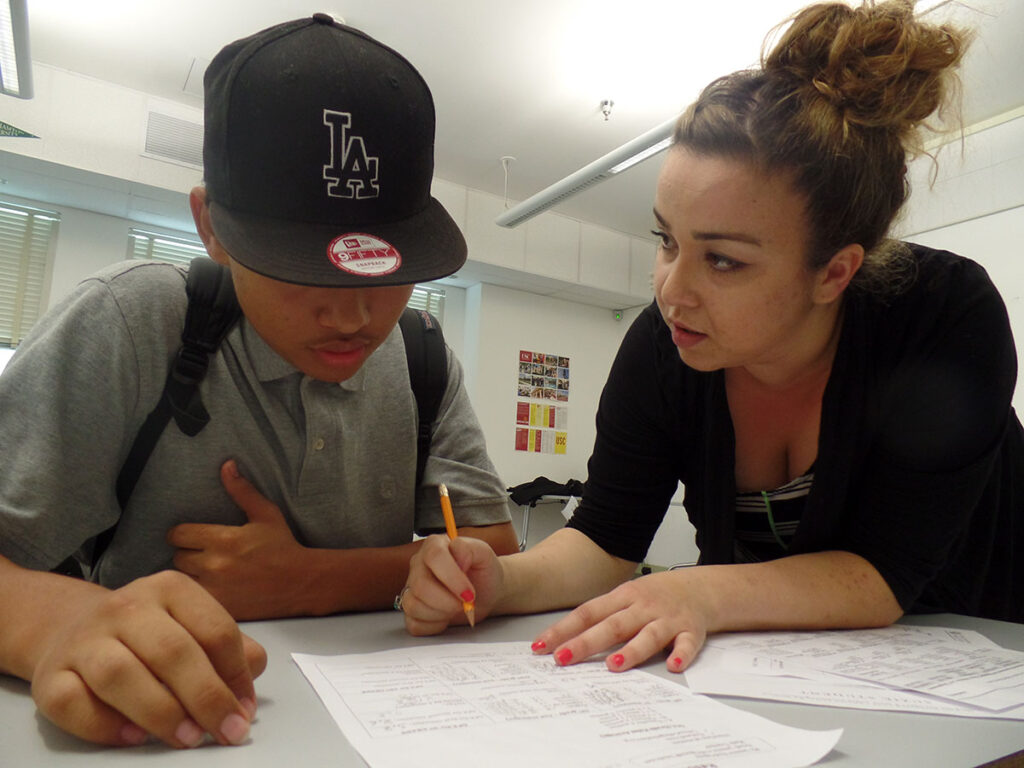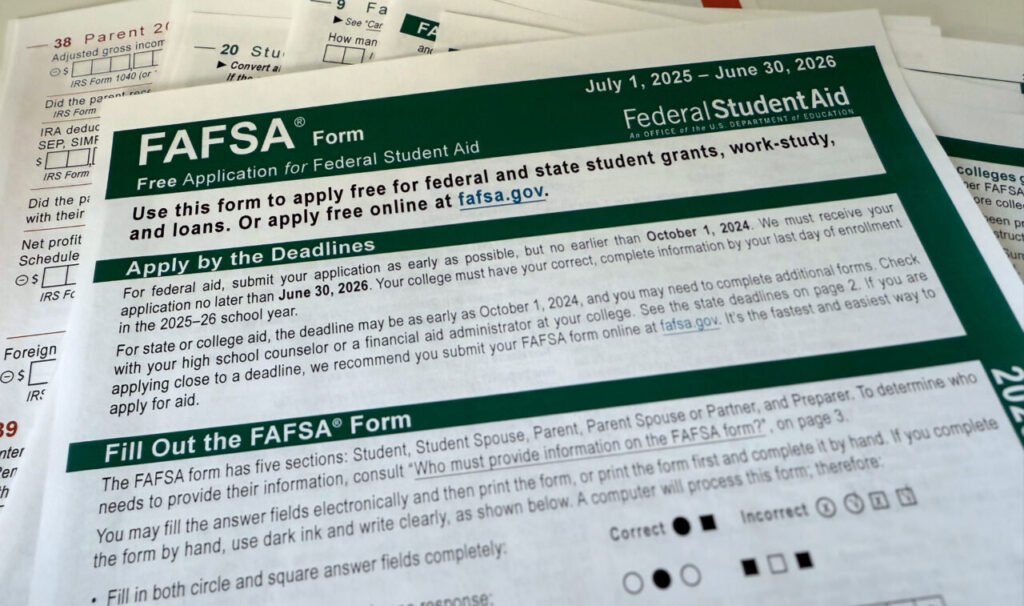
Rapper D Smoke at a hip-hop jam in Los Angeles, part of the launch event for the School Gig app.
Credit: Chase Stevens
Elmo Lovano fell for the drums at the age of 10. He was touring as a musician by 15, performing with the likes of Miley Cyrus and Juliette Lewis. His affinity for music eventually led him to found Jammcard: The Music Professionals Network, which has been described as a sort of LinkedIn for the music industry, connecting musicians to jobs.
“Art and music led me to become the entrepreneur that I am today,” Lovano said. “It taught me how to communicate with others and how to lead. Drumming gave me a feeling of passion that fueled my drive.”
Lovano used his unique blend of tech know-how and musical instincts to develop School Gig, a job platform that connects schools with artists of all kinds, from musicians and dancers to actors and visual artists. The new app, which was recently launched at a hip-hop jam featuring R&B singer/songwriter Omarion and Daniel “D Smoke” Farris in Inglewood, is a tool to help schools tap into the expertise of their local arts communities in the wake of Proposition 28.
“To me, teaching young students arts and music is one of the most important things they could learn,” said Lovano. “I love bringing people opportunities, and School Gig allows us to provide artists with new opportunities while educating kids and assisting schools. It’s a win-win-win.”
The app is part of an ongoing effort to bang the drum for Proposition 28, to help recruit the thousands of arts educators who will be needed as California schools begin to ramp up their plans for the state’s 2022 historic initiative to bring arts education back into schools after many decades of budget cuts. The mandate ensures roughly $1 billion in annual funding, administered by the California Department of Education, to teach a wide range of disciplines as diverse as hip-hop riffs and marching band, dance and drama, folk art and high-tech animation.
“Prop. 28 is the largest investment in arts and music in our nation’s history,” said Austin Beutner, the former superintendent of LAUSD who spearheaded Proposition 28, “It will provide all 6 million kids in California public schools the opportunity to participate in arts and music at school.”
That money is on its way to schools. A schedule of allocations for Proposition 28 funds will be posted on the Department of Education website in November, officials say, and the first installment is set to land in February. The guidelines state that at least 80% of the money is earmarked for arts education staff, and the rest can go toward other costs, such as training, supplies, materials and partnership programs.
One main challenge now is how to recruit legions of new educators, given that the arts teacher pipeline has shriveled over time. There are so few newly minted arts educators in California that some schools are having to recruit out-of-state teachers. The existing teacher shortage also means that filling all the anticipated arts ed positions will be no mean feat.
“It’s a significant number of teachers that we’re looking at being hired in California,” said Mike Stone, coordinator of the visual and performing arts with the Bakersfield City School District. “The problem that we will face with Prop. 28 is filling the ranks of teachers, certificated teachers in the classroom, because there simply is going to be a shortage in the pipeline for the next several years.”
Some say tapping working artists, who can either work alongside classroom teachers or pursue a credential, is a way to grow the ranks until the supply can meet the demand. That’s where School Gig comes in.
“We know how to hit artists where they live,” Lovano said. “This is exciting for us, it’s powerful to bring artists to the schools. You can still do you, you can have your art, but also you have an opportunity to connect with the schools.”
“Prop. 28 is the largest investment in arts and music in our nation’s history.”
Former LAUSD Superintendent Austin Beutner
Many are hopeful the app can play a role in helping schools overcome the state’s ongoing teacher shortage, which has deepened during the pandemic, by enticing prospective teaching artists.
“The School Gig app seems like it has got some legs,” said Merryl Goldberg, a professor of music and arts integration at California State University San Marcos. “The biggest challenge will be outreach to get schools to market their positions.”
For the record, there are already sites where schools post open jobs, such as EdJoin. A recent search for “music teacher” resulted in 216 postings representing 363 job vacancies.
Stone recently hired 13 new arts teachers, with specialties ranging from stringed instruments and rock music to theater, to help build out the already robust Bakersfield arts ed program. He says it was a highly competitive process that will only get harder as more schools get in on the act.
“It’s difficult right now, and it’s going to be more difficult this coming hiring cycle because everyone will have the dollars in their bank account and be hiring,” said Stone, a veteran music teacher who started out playing a baritone horn in the fourth grade. “We’re going to see more of a crisis this coming summer.”
Making deeper connections within local school communities, tapping into homegrown talent, could be part of the solution, some say.

“That’s the beauty of something like School Gig,” said Stone who is also the president of the National Association for Music Education, Western Division. “Maybe there is a hip hop dancer in Oakland who wants to work in a school, and maybe there’s a way to connect them to the school district to see if there’s a job that would be of interest.”
Several districts have already signed on to participate with the app, including Inglewood and Fresno.
“I am excited to start using the platform to find and recruit arts teachers,” said Heather Kuyper-McKeithen, arts education department manager for Fresno Unified. “We have a plan to hire 60 teachers over the next few years for TK-12th grade instruction in dance, theater, art, and music.”
Some arts educators, however, are concerned the app may favor putting teaching artists in schools at the expense of credentialed arts teachers. As one arts education expert put it, “teaching is not a gig.”
Despite the complications of launching a program this ambitious, including differing opinions about what kind of genres to teach, who should teach them and whether the CDE is providing enough guidance on the rollout, Stone remains steadfast in his enthusiasm.
“It’s important that the Department of Education put out accurate information as soon as possible,” said Stone. “In fairness to the Department of Ed, they’re trying to figure it out as well. This is such a huge endeavor to operationalize. The point is that we have to be patient.”
Like many in the arts education world, Stone is still pinching himself that there is finally funding earmarked for the arts. After 35 years in the field, this is a watershed moment he never thought he’d see happen.
“There’s finally discrete funding for arts education. We have never had that in California,” said Stone. “It’s a paradigm shift forever. We are leading the way here. It’s an arts education renaissance.”















